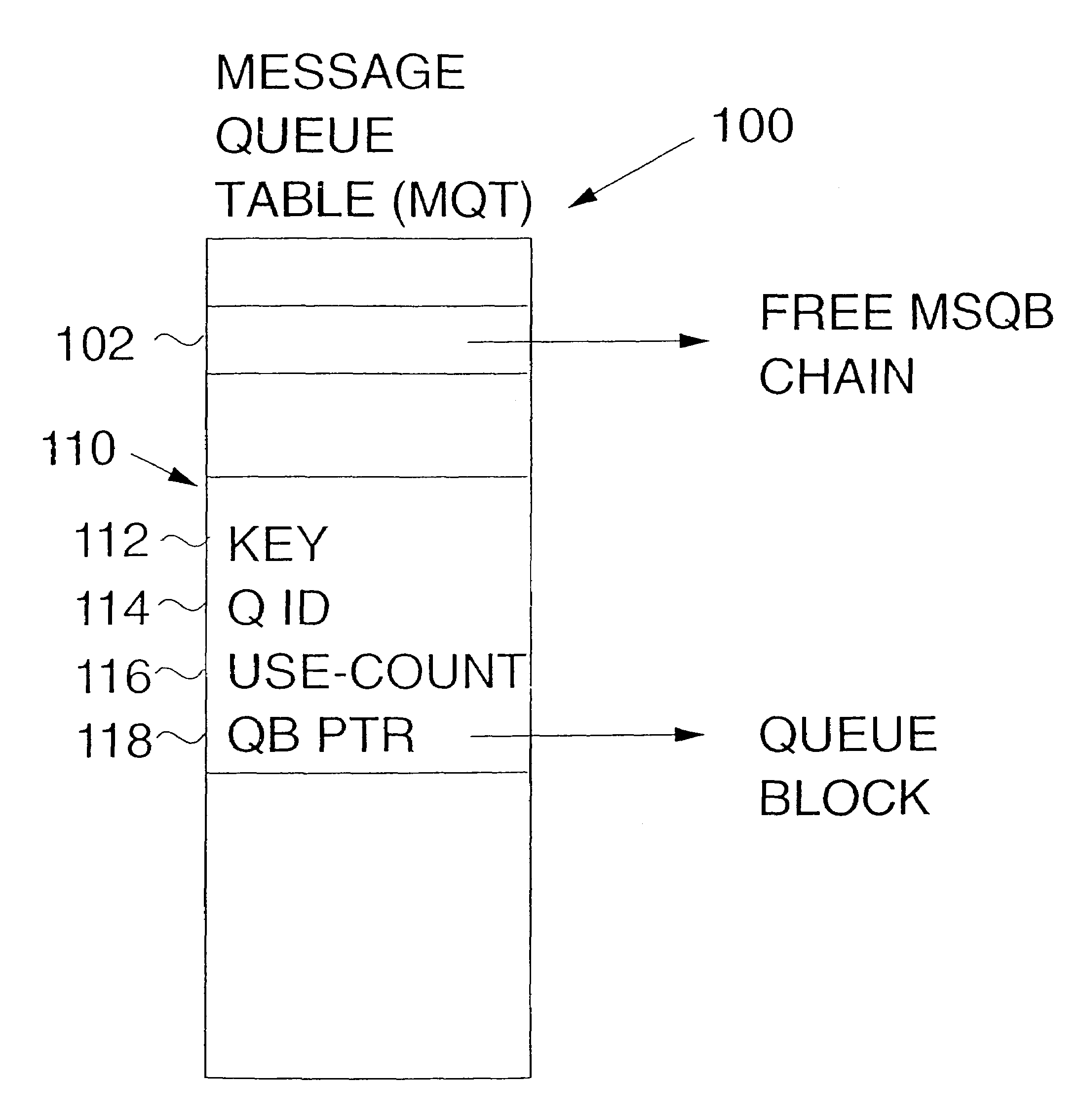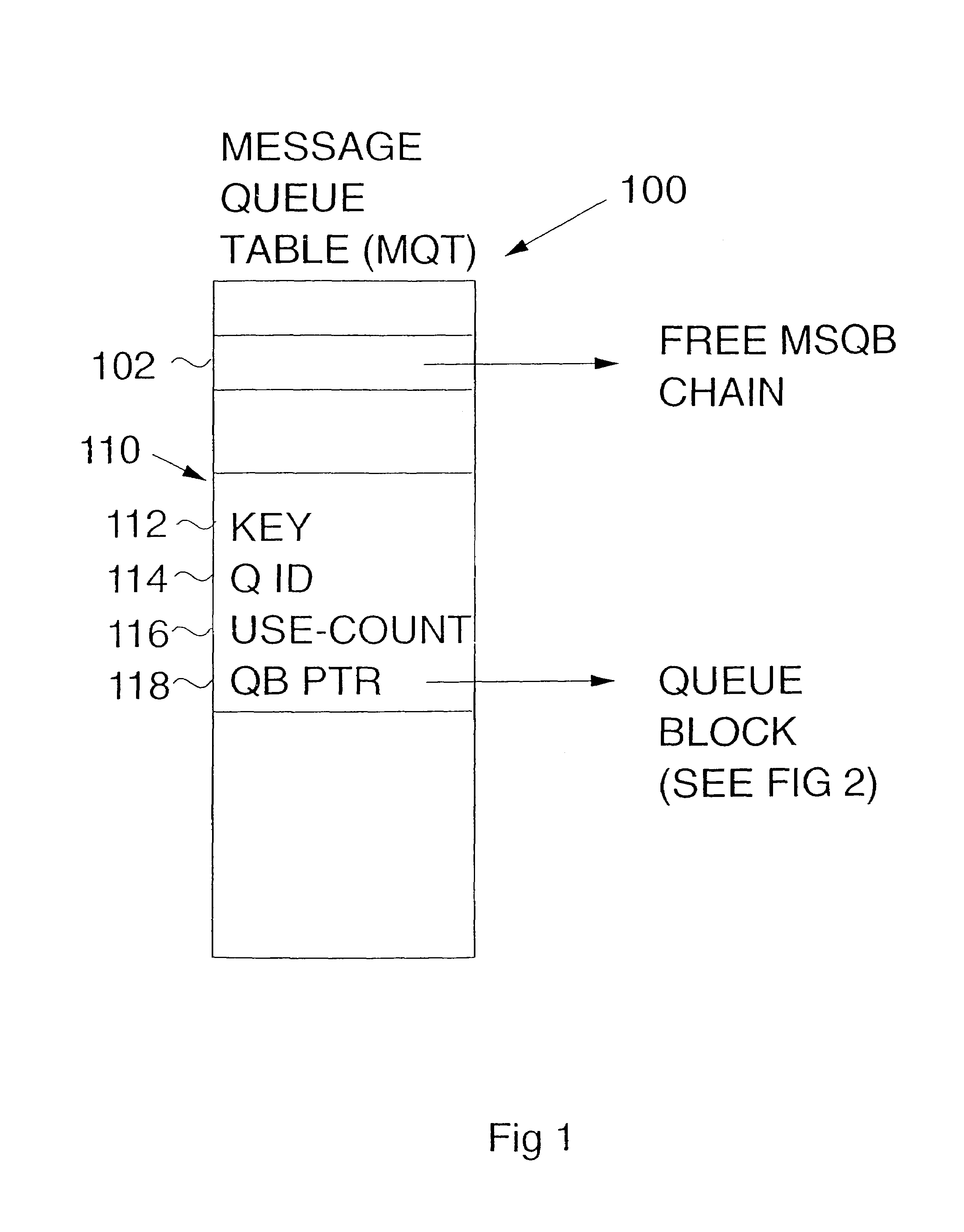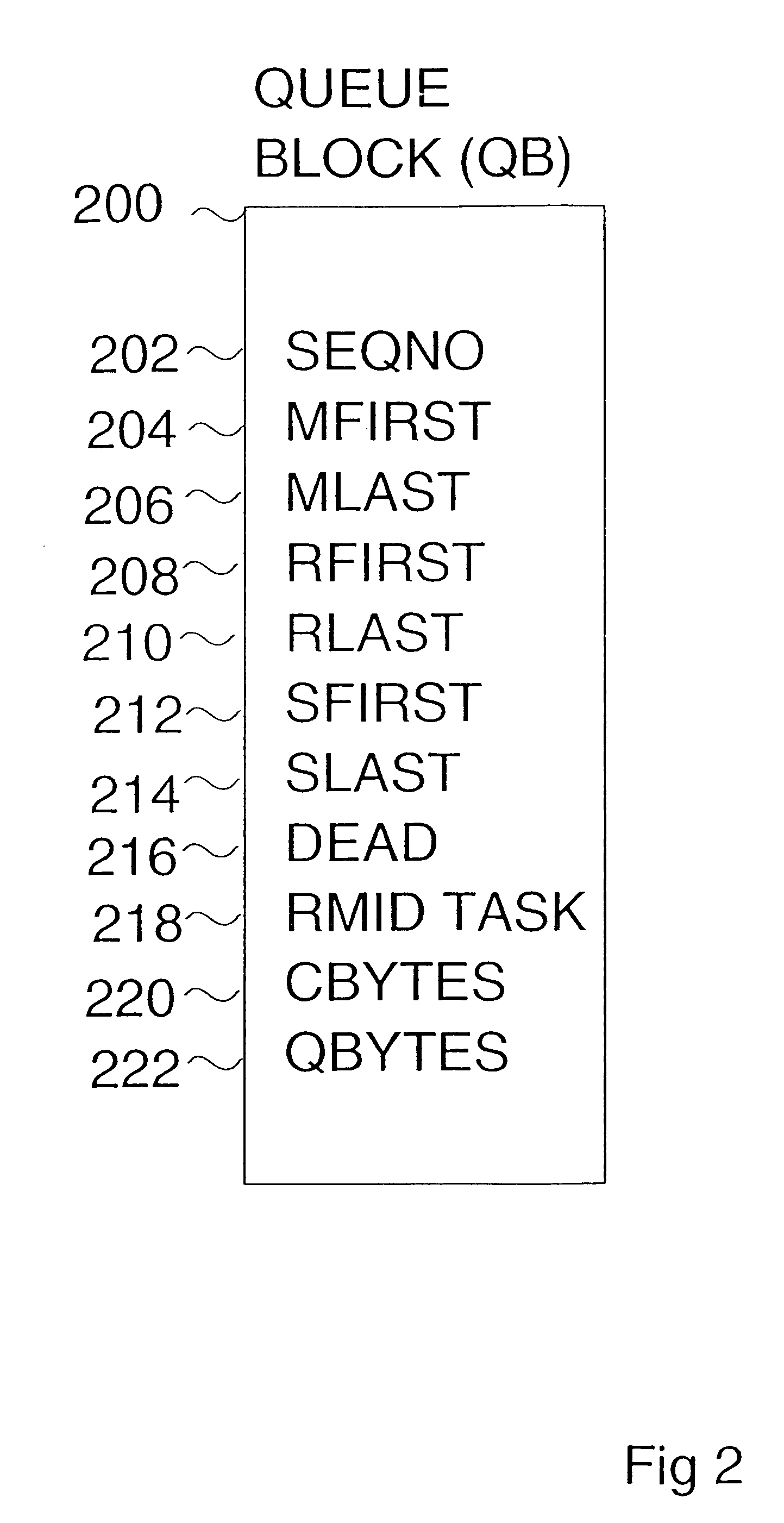Method and apparatus for serializing a message queue in a multiprocessing environment
a multiprocessing environment and message queue technology, applied in the direction of data conversion, multiprogramming arrangements, program control, etc., can solve the dilemma of what to do, long response time or reduced transaction rate, error recovery
- Summary
- Abstract
- Description
- Claims
- Application Information
AI Technical Summary
Benefits of technology
Problems solved by technology
Method used
Image
Examples
Embodiment Construction
Introduction
[0074]FIG. 11 shows an information handling system 10 incorporating the present invention. System 10 may comprise a hardware machine containing one or more central processors (CPs) 12 and main storage 14, together with various peripheral devices (such as disk storage) not separately shown.
[0075]Executing as programs on CPs 12 are an operating system (OS) kernel 16 and one or more user applications 18. System 10 may, for example, comprise any of the various models of the IBM S / 390 Parallel Enterprise Server processor, while OS kernel 16 may comprise the IBM OS / 390 operating system, with its UNIX System Services component providing standard UNIX functions such as the message queue functions described herein.
[0076]In the preferred embodiment, hardware machine 10 executes an instruction set defined in Enterprise Systems Architecture / 390 Principles of Operation, IBM Publication SA22-7201-06 (July 1999), incorporated herein by reference. Of particular interest to the present i...
PUM
 Login to View More
Login to View More Abstract
Description
Claims
Application Information
 Login to View More
Login to View More - R&D
- Intellectual Property
- Life Sciences
- Materials
- Tech Scout
- Unparalleled Data Quality
- Higher Quality Content
- 60% Fewer Hallucinations
Browse by: Latest US Patents, China's latest patents, Technical Efficacy Thesaurus, Application Domain, Technology Topic, Popular Technical Reports.
© 2025 PatSnap. All rights reserved.Legal|Privacy policy|Modern Slavery Act Transparency Statement|Sitemap|About US| Contact US: help@patsnap.com



